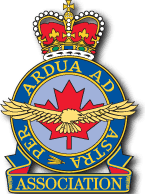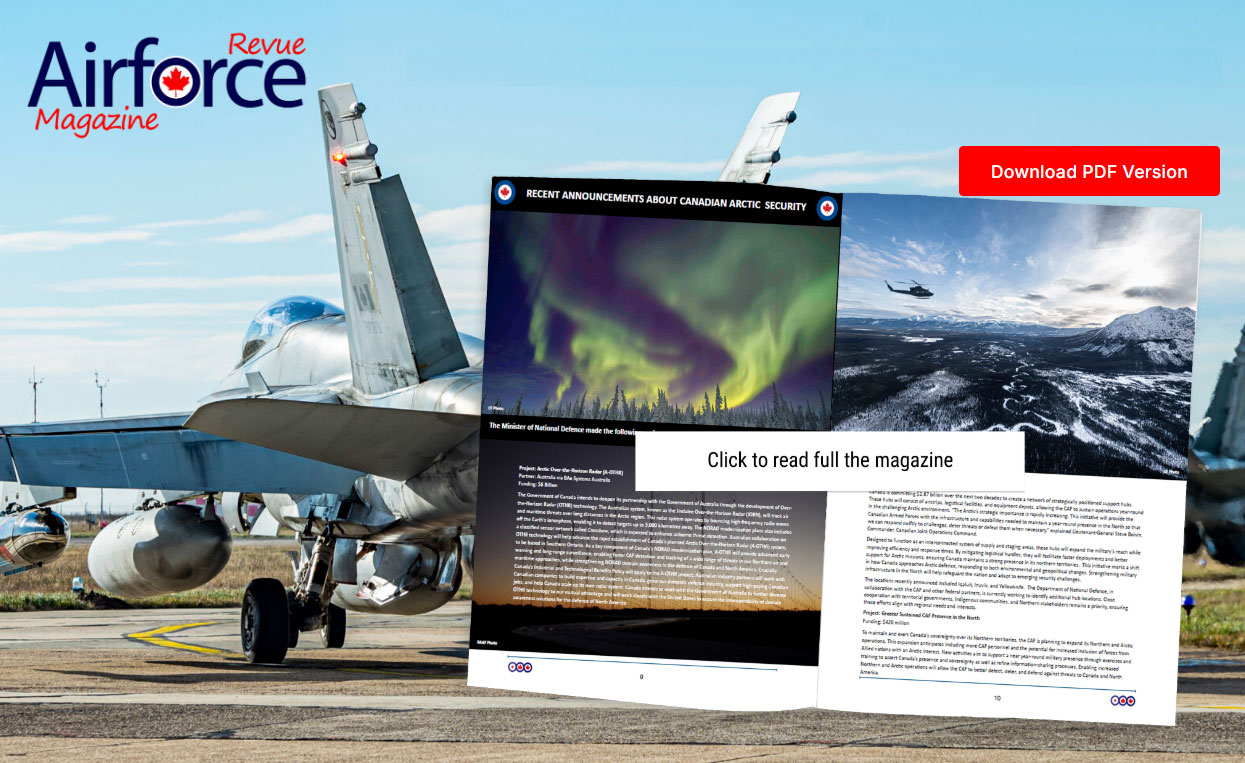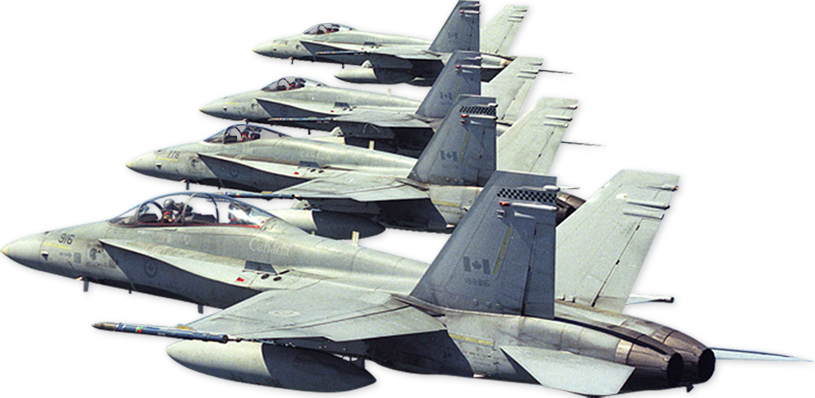GOODERHAM,
Grant Armstrong
Flight Lieutenant,
SEE DESCRIPTION,
SEE DESCRIPTION
Mention in Despatches
British Flying Services WWI
Description (click to view)
GOODERHAM, Flight Lieutenant Grant Armstrong - Mention in Despatches - awarded as per London Gazette dated 12 May 1917. Born in Toronto, 8 January 1892; home there (civil engineer); educated at University of Toronto passed tests at Toronto Curtiss School, 12 July 1915; appointed Probationary Flight Sub-Lieutenant, RNAS, in Ottawa, 13 July 1915. At Chingford, 8 August 1915; at Whitley Bay Air Station, 17 September 1915 (flew anti-submarine and airship patrols); to No.1 Wing, Dunkirk, 29 April 1916; to Dover, 7 June 1916; to Air Department, N.A.D., 17 March 1917; to No.55 TDS, 7 November 1918; to unemployed list, 9 April 1919; drowned in Toronto Bay, 2 May 1919. NOTE: All the awards credited him are also questioned, as he seems to have spent a great deal of time on sick leave; much of his time also seems to have been on instructional and technical work. Diligent search of London Gazettes for 1917-1919 confirms only the original Mention. Nevertheless, a memo dated 25 April 1917 (found in Public Records Office Air 1/74) lists a number of awards (including the DSCs to P.S. Fisher and D.A.H. Nelles, gazetted 12 May 1917) and provides the following citation: // For consistently good work for the last ten months in carrying out coastal reconnaissances and fighter patrols, for our own and French machines. // GOODERHAM, Flight Lieutenant Grant Armstrong - Mention in Despatches - awarded as per London Gazette dated 28 November 1917. Not found in check of Gazettes. // GOODERHAM, Flight Lieutenant Grant Armstrong - Mention in Despatches - awarded as per London Gazette dated 18 March 1918. Not found in check of Gazettes. // GOODERHAM, Captain Grant Armstrong - Croix de Guerre (France) - awarded as per London Gazette dated 21 September 1918. Not found in check of Gazettes. // GOODERHAM, Captain Grant Armstrong - Distinguished Flying Cross - awarded as per London Gazette dated 1 January 1919. Not found in check of Gazettes and not listed in Carter books on the DFC. // Public Record Office Air 1/1217/204/5/2634/6 has a Combat Report involving him (copied into National Library and Archives, MG.40 D.1 Vol.21) as follows: // 23 July 1917 (Naval Squadron No.6) // Type of Aeroplane: Camel N.6373 // Pilot: Flight Lieutenant Gooderham // Armament: Two Vickers guns // Time: 8.15 p.m. // Duty: Offensive Patrol // Height: 13,000 feet. // Locality: Near Moere // Remarks on Hostile Machine: Albatross Scout, V-type, coloured dark green. // Narrative // At 16,500 feet I observed E.A.s in locality of Moere in number about four or five. At about 12,000 feet I attacked from above and behind, observing tracer bullets entering enemy machine near pilot’s seat. E.A. started into spin, which continued for about 3,000 feet. He was last seen on his back. I had to break off observation owing to being attacked from behind by another E.A. I fired a few rounds at him without apparent result. I lost engine, spinning down to about 7,000 feet, when I was able to regain it again and returned with my own machine considerably riddled.
GOODERHAM,
Douglas
Wing Commander,
Overseas,
C3170
Officer, Order of the British Empire
RCAF Personnel Awards 1939-1949
Description (click to view)
GOODERHAM, W/C Douglas (C3170) - Officer, Order of the British Empire - Overseas - Award effective 1 January 1945 as per London Gazette of that date and AFRO 721/45 dated 27 April 1945. Born in England, 2 May 1912. Enlisted in Regina, 6 November 1940 in Signals Branch and commissioned that date. Promoted Flying Officer, 1 September 1941. Promoted Flight Lieutenant, 15 August 1942. Promoted Squadron Leader, 15 August 1943. Promoted Wing Commander, 1 November 1943. Served in radar work in Britain, Iceland and the Far East. Repatriated to Canada, 9 July 1945. Retired 7 November 1945. Rejoined RCAF as Squadron Leader, 1 May 1948 in Telecommunications Branch. Promoted Wing Commander, 1 June 1949. Promoted Group Captain, 1 January 1955. Retired from the RCAF, 1967, in the rank of Air Commodore. Employed by Bell Canada over the next ten years, then attended Carleton University. Died in Ottawa, 21 January 2001. Public Record Office Air 2/9609 (courtesy Steve Brew) has recommendation drafted in the spring of 1943 for OBE to be included in Birthday Day 1943 awards (2 June 1943). He was then a Squadron Leader with No.224 Group Headquarters, India. The relationship between the 1943 submission and 1945 award is uncertain. RCAF photo PL-60319 (ex UK-19930 dated 12 April 1945) shows group of radio personnel in Calcutta at start of repatriation journey - Standing (left to right) are Sergeant A.C. McInnes (Iroquois, Ontario), W/C C.D. Gooderham (Maryfield, Saskatchewan) and S/L James A. Elliott (Brandon, Manitoba). Seated are (left to right), S/L H ‘Tony’ Blondal (Winnipeg), Sergeant J.M. Younie (Edmonton), S/L J.H. Rowlatt (Montreal) and S/L A.H. Hill (Winnipeg).
This officer has been senior radio officer at the group and has been responsible for setting up and maintaining the RDF coverage in the Calcutta area. A fairly comprehensive system has now been built up and this can be attributed to the zeal and energy displayed by Squadron Leader Gooderham.
GOODERHAM, W/C Douglas, OBE (C3170) - Bronze Star Medal (United States) - Third Tactical Air Force (AFRO gives unit only as "Overseas") - Award effective 24 October 1945 as per Canada Gazette dated 6 April 1946 and AFRO 388/46 dated 12 April 1946. Public Records Office Air 2/9103 has recommended citation.
For exceptionally meritorious service during the period 15 December 1943 to 20 February 1945. As Senior Radar Officer, Third Tactical Air Force and Eastern Air Command, Wing Commander Gooderham's supervision of Radar and Aircraft Warning activities demonstrated outstanding foresight, knowledge and efficiency in instigating the planning and operation of the combined British-American Radar and Aircraft Warning network in the Eastern Air Command operational area. He handled both administrative and technical problems with such efficiency that he gained and maintained the utmost respect of both USAAF and RAF officers under his supervision. His devotion to duty and his untiring efforts were an inspiring example to personnel of the closely integrated Aircraft Warning System. His unselfish contribution to the USAAF mission in Burma when American equipment and personnel were inadequate and its accomplishment reflect the highest credit on the Military Forces of the United Nations.
GOODERHAM,
George William
Flight Lieutenant,
No.1 FIS,
C8327
Commended for Valuable Services - Air Force Cross
RCAF Personnel Awards 1939-1949
Description (click to view)
GOODERHAM, F/L George William (C8327) - Commended for Valuable Services - No.1 FIS - Award effective 5 May 1944 as per London Gazette of that date and AFRO 1133/44 dated 26 May 1944. Born in Toronto, 10 March 1908 as per RCAF Press Release reporting award of AFC; attended Upper Canada College, Ridley College and University of Toronto. Salesman, 1931-32 (Waddox Engineering) and 1932-33 (Service Station Equipment Company); attorney and in partnership with Draper Dobin, 1933-1940. He had also obtained a Commercial Pilots License. Enlisted 5 June 1940 in Toronto and posted that day to Trenton; classified as Instructor (Sergeant) on Leave Without Pay. To No.3 EFTS, 6 July 1940. To No.1 Manning Depot, 8 July 1941 on recall from Leave Without Pay; to Picton, 1 August 1941; to Conversion Training Squadron, Picton, 8 August 1941; to No.12 SFTS, Brandon, 9 August 1941 for advanced course on Crane aircraft. Commissioned 15 October 1941. To CFS, Trenton, 24 October 1941. Promoted Flying Officer, 1 October 1942. Promoted Flight Lieutenant, 1 January 1943. To No.3 Training Command, 28 July 1943. To No.1 Flying Instructor School, 9 September 1943. Promoted Squadron Leader, 1 December 1943. Detached to RAF overseas, 4 April to 13 August 1944, attending Empire Central Flying School. To No.4 Release Centre, Toronto, 5 March 1945. Retired 7 March 1945. Commissioned in RCAF Auxiliary, 15 April 1946 with rank of Squadron Leader (service number 120382); promoted Wing Commander, 1 August 1946. Commanded No.400 Squadron for two years, commencing 24 July 1946 . To Class “E” Reserve, 31 October 1948. Recalled to Auxiliary service in Toronto, 15 March 1951 to assume command of No.14 Wing with rank of Group Captain; Queen's Coronation Medal, 1953; on strength of No.14 Wing, 30 June 1955 when transferred to Supplementary Reserve. Died in Toronto, 25 March 1977. No citation in AFRO or biographical file. DHist file 181.009 D.1721 (PAC RG.24 Vol.20606) has recommendation which bears no date but was forwarded to No.1 Training Command Headquarters on 21 December 1943. He had then flown 2,010 hours, of which 1,842 were as instructor, and 188 hours in past six months: // Flight Lieutenant Gooderham has been engaged in flying instructional duties for the past four years. He has at all times shown an exceptional keenness for his job and has made a great contribution to the efficiency of No.1 Flying Instructor School. He is an A1 Category Flying Instructor. // This was raised on 10 December 1943 by W/C M. Lipton; endorsed by A/V/M A.T. Cowley (No.1 Training Command) on 21 December 1943 and went on to AFHQ. // GOODERHAM, S/L George William (C8327) - Air Force Cross - No.1 FTS - Award effective 14 June 1945 as per London Gazette of that date and AFRO 1127/45 dated 6 July 1945. No citation in AFRO or biographical file. DHist file 181.009 D.1721 (PAC RG.24 Vol.20606) has recommendation dated 20 December 1944 when he had flown 2,311 hours, of which 2,200 were as instructor and 133 had been flown in previous six months. Had made two trans-Atlantic delivery flights: // Squadron Leader Gooderham has been engaged on flying instructional duties for the past five years. During this time he has held the positions of Deputy Flight Commander, Flight Commander, Examining Officer and Squadron Commander. He has attended ECFI [?] and completed the course with a distinguished pass. As a member of the staff of this unit, Squadron Leader Gooderham has proved to be an excellent organizer and administrator, and his devotion to duty has been of the highest order and of exemplary manner. This officer has made an outstanding contribution to the success of the BCATP. // Governor General's Records (RG.7 Group 26 Volume 59, file 190-I, dossier 7) has official citation which differs slightly from the above. // Squadron Leader Gooderham has been engaged on flying instructional duties for the past five years. During this time he has held the positions of Deputy Flight Commander, Flight Commander, Examining Officer and Squadron Commander. As a member of the staff of this unit, Squadron Leader Gooderham has proved to be an excellent organizer and administrator, and his devotion to duty has been of the highest order and of exemplary manner. This officer has made an outstanding contribution to the success of the British Commonwealth Air Training Plan and has given of himself unstintingly far beyond the normal call of duty. // The above was raised on 20 December 1944 by W/C G.A. Folkins. // Notes: Interviewed 24 December 1940 in Toronto by F/O E.C. Cross. Stated that he had flown some 300 hours, 1929-30 and that since 5 June 1940, as a civilian instructor he had flown 300 hours; had taken Instructor course and Link course at CFS Trenton. “This man has had extensive flying experience which should be of great value to the service. Intelligent, keen, pleasant, he is fully qualified in all personal respects for commissioned rank.” // First course as an Instructor at Trenton, 9 June to 26 June 1940. Flew 29 hours solo and 21.35 dual; his previous flying experience was described as 260 hours solo and 40 hours dual on Moth, Taylorcraft and Fleet. “A hard working and reliable pupil, slightly lacking in confidence in himself, clear head, and aerobatics average, instrument low average. Category recommended Temporary 2.” (F/O A.J. Shelfoon). Further comments by F/L G.P. Dunlop - “Weak in demonstrations of side-slipping and forced landings. Needs practice in Instrument flying. A good type, however, and should improve rapidly.” Catergorized as Class II Temporary. // He was re-examined at No.3 EFTS by S/L C.D. MacAllister and confirmed as a Class II Instructor on 16 October 1940, although he still needed practice at Instrument Flying. // On 24 November 1941 he was reassessed by S/L J.G. Stephenson at Central Flying School. Tested on a Harvard aircraft; reclassified as B Category - “An above average pilot whose experience, patter, flying and demonstrations warrant a high category.” // Tested again on 23 June 1942 by F/L J.C. Wickett, this time on both Crane and Fleet. Described as “Above average ability as a pilot and instructor.” Described under various headings - Sequence (“Excellent”), Voice (“Clear”), Manner (“Convincing”), Ability to impart knowledge (“Above average”) and Ability as pilot (“Above average”). Category raised to A-2 Instructor. // Tested again 22 March 1943 by S/L George L. Ingram on Cornell and Crane. By then he had flown 1,157 hours 15 minutes single-engine solo, 49 hours 20 minutes single engine dual, 396 hours 55 minutes twin-engine solo and 42 hours 45 minutes twin-engine dual. “This instructor shows he has plenty of experience together with study and ability.” Described under following headings - Sequence (“Very good”), Voice (“Vigorous, Clear”), Manner (“Clear, concise”), Ability to impart knowledge (“Excellent”) and Ability as pilot (“Unquestionably good in all departments”). Category raised to A-1 Instructor. // Reported to have flown two aircraft to the United Kingdom (not sure when). // Report on course at Empire Central Flying School, course running 3 May to 2 August 1944. During the course he had flown 104 hours 20 minutes (bringing his total hours to 2,231 hours 55 minutes) and types flown were listed as Oxford, Mosquito, Master, Magister, Wellington, Lancaster, Havoc, Spitfire, Hurricane, Harvard, Tutor, Hudson, Stirling and Hotspur. On some of these he must have been merely a passenger. // A very sound officer who well deserved his distinguished pass and came very near to obtaining a special distinction. He maintains a high level of all round ability in the air and on the ground, and has shown interest in experimental flying and in the work of the aeronautical laboratory. Has kept a valuable course record. His essay might have been better presented, and deserved a better title, but is otherwise well thought out and expressed. He has both given and received direct first class value. (W/C A.C. Kermode, Chief Ground Instructor). // To this is added the following: // A hard and conscientious worker, who put a lot of hard work into the course and contributed some sound ideas. Very helpful on various committees. An extremelu capable pilot in every respect. Would make an excellent executive officer in any flying training unit. (W/C A.J. Shelfoon, Chief Flying Instructor) // A further comment: // This officer has been painstaking over all aspects of the course. He has contributed something towards all activities of the course. A most likeable individual, popular and a good officer. (G/C H.A.V. Hogan, Chief Instructor) // And finally: // A sound, hard working and conscientious officer with a good background and great charm of manner. Would fit in any executive post at a flying unit. (Air Commodore C. McC Vincent, Commandant) // Selected Assessments: “This officer served as an elementary temporary Sergeant instructor (on leave without pay) for a period of a year. This past experience is evident in the caliber of the pupils he graduates.” (W/C J.G. Stephenson, Trenton,13 October 1942) // “This officer is capable of carrying out the duties of a Squadron Leader at any SFTS. This officer was formerly a flight commander who produced excellent results. He has lately assumed the duties of an examining officer in a very competent manner. He possesses above average ability and a pleasing personality.” (W/C J.G. Stephenson, No.1 FIS, 1 May 1943). // “A strong member of the FIS staff who takes a sincere interest in flying training. Has been an examining officer for the past five months which is a Squadron Leader post. Recommend promotion to Temporary Flight Lieutenant effective 1 January 1943.” (W/C M. Lipton, No.1 FIS, 1 September 1943). // “Wing Commander Gooderham has devoted much time, thought and energy to the organization and development of 400 Squadron (Auxiliary). Through his leadership and direction the squadron has progressed to a high standard of training. He is tactful but firm and has gained te highest respect from all squadron personnel associated with him.” (W/C A.B. Searle, 8 October 1948) // “A loyal and conscientious officer who has given long service to the Auxiliary. He works by persuasion rather than by force and has produced sound results. He is unlikely to remain much longer in Auxiliary activities due to pressure of business and domestic affairs.” (G/C V.H. Patriarche, No.2 Group Headquarters, 11 August 1954).








